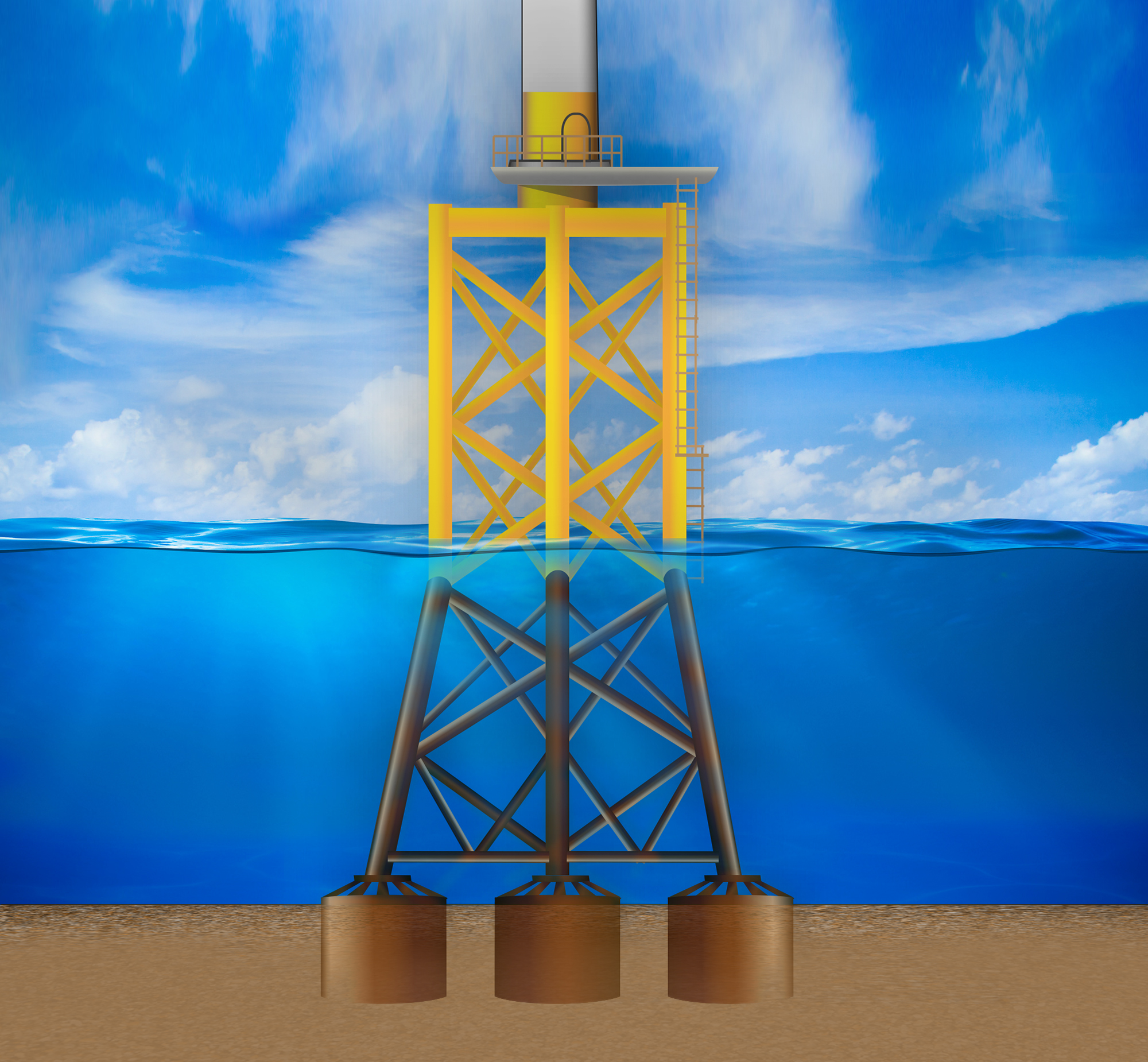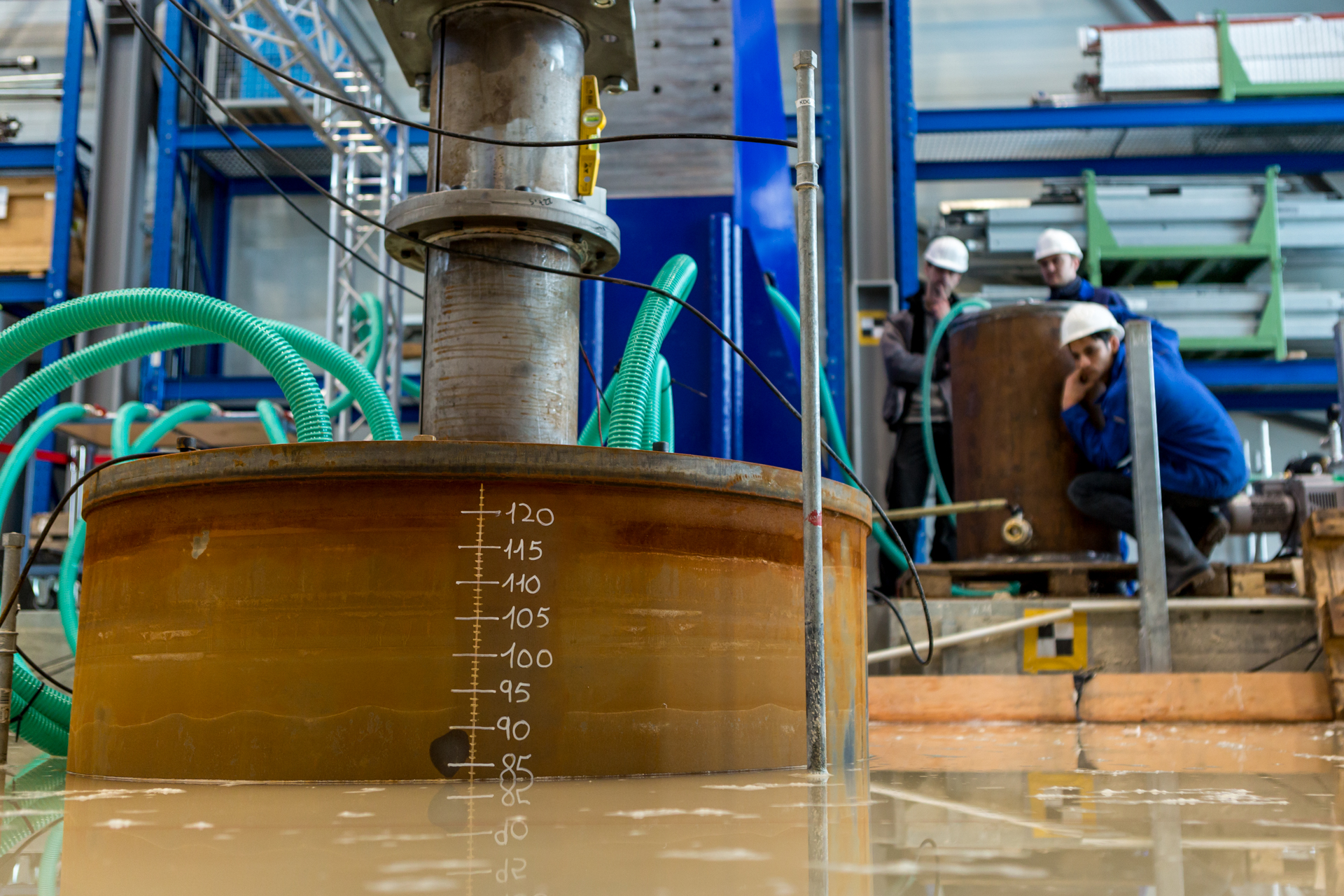Suction Buckets: Large-Scale Test Reveals Increased Tensile Capacity During Storms
Fraunhofer IWES tested two large-scale suction buckets in a 1:5 scale in early 2018. The physical experiments at the Test Center for Support Structures in Hanover (TTH) are the first of their kind in Germany. The test results confirmed the enormous potential of this foundation concept for reliable and cost-effective deployment in offshore wind farms. Within the experimental work the IWES researchers were also able to quantify an effective temporary increase in tensile capacity during storms. For manufacturers, this means the possibility of material savings for the entire construction without compromising stability.
The so-called “suction buckets” have been used successfully in the oil and gas industry. The offshore wind energy sector will see this year the first commercial wind farm with substructures comprising multiple buckets. Numerous questions regarding the dimensioning and the operational behavior of the bucket-foundations still remain open. For this reason, Fraunhofer IWES investigates the potential for optimization for offshore wind energy in a research demonstration project.
Object of the study is the behavior of the bucket foundations during the suction-assisted installation and its axial behavior when subjected to extreme wave loads. The large-scale experimental investigations are carried out at the TTH, an installation of the Leibniz University Hannover. As jacket substructures for offshore turbines have to stand harsh weather conditions, the focus was on tensile load tests replicating the effect of extreme waves on the structure. This allowed the IWES researchers to confirm that the pull-out capacity of suction buckets increases temporarily during extreme weather conditions. This is caused by the negative pressure generated inside the bucket when the foundation is struck by particularly extreme waves. This increases the load-bearing capacity of the foundations significantly.
“We were able to observe that the tensile capacity of the foundation increases temporarily by a percentage in the two-digit range during a typical storm,” said IWES project manager Tulio Quiroz. “The increase can be even higher in the case of extreme storm events.”
Today’s offshore foundations are designed very conservatively. One of the reasons for that is the still not well-known foundation behavior when subjected to cyclic loading. The realistic assessment of the foundation response can result in considerable material and logistic savings without compromising the structure stability. The IWES researchers are now one step closer to this quantification. This increases the cost-efficiency of this innovative application, which already offers a whole range of advantages for the environment and wind farm operators. These include for example the installation of the substructure and the foundations in one step, low noise installation and the possibility of complete one-step removal of the substructure and foundation elements after the end of the operational life.
Bucket foundations are composed of a closed steel cylinder reminiscent of a bucket, hence the name. The cylinder is lowered to the seabed by crane and then pumped empty. This creates a negative pressure in the cylinder and the hydrostatic pressure acting upon it from above drives the foundation into the sediment.
For offshore jackets, buckets have commonly a diameter of 6 to 9 meters. In their tests, the IWES scientists used a bucket with a diameter of 1.4 meters designed for a jacket support structure.The exceptional test set-up ensured homogeneous and realistic test conditions. The TTH’s foundations test pit is 14 meters long, nine meters wide, ten meters deep and was filled for the tests with sandy sediment, typical of the North Sea.
“The suction bucket foundation displays a great deal of potential for an even more reliable and cost-effective deployment in the North Sea. However, the installation requires considerable expertise and validated prediction models,” said Tulio Quiroz.
In order to drive forward research in this field, Fraunhofer IWES plans to assemble a research cluster comprising industry partners, research institutions and approval authorities.
Last modified:

